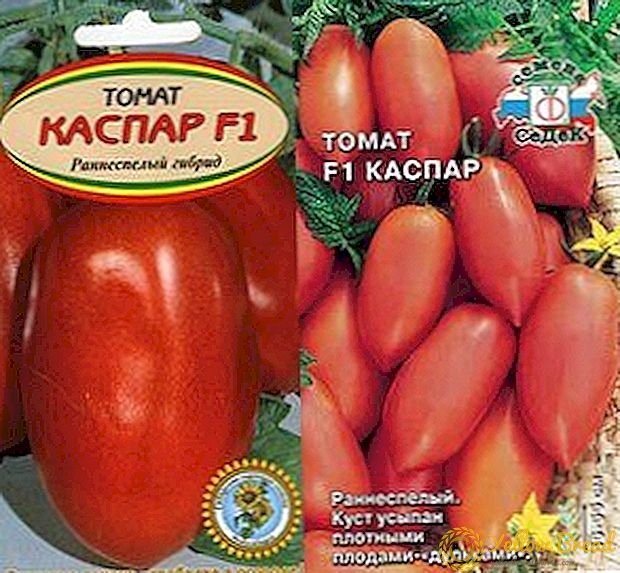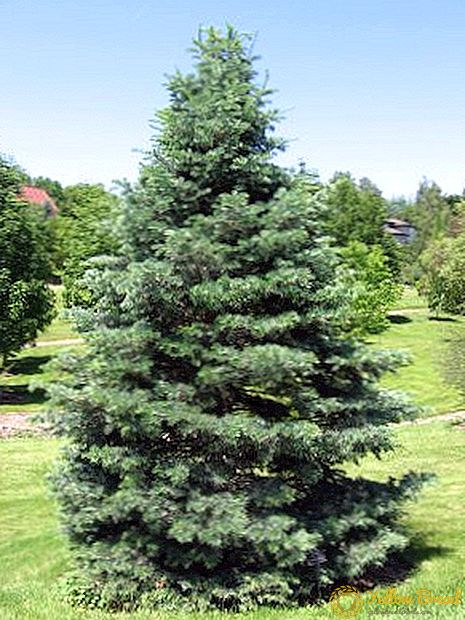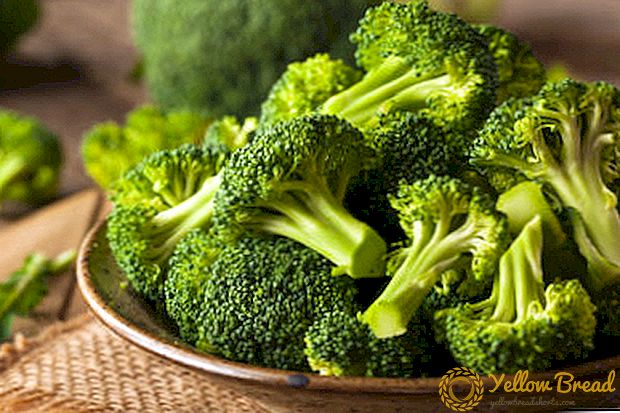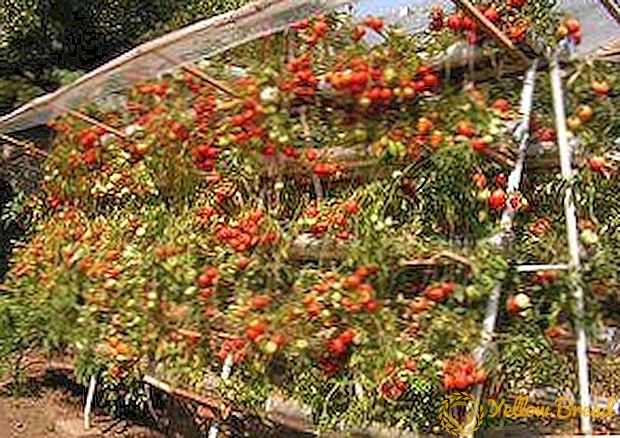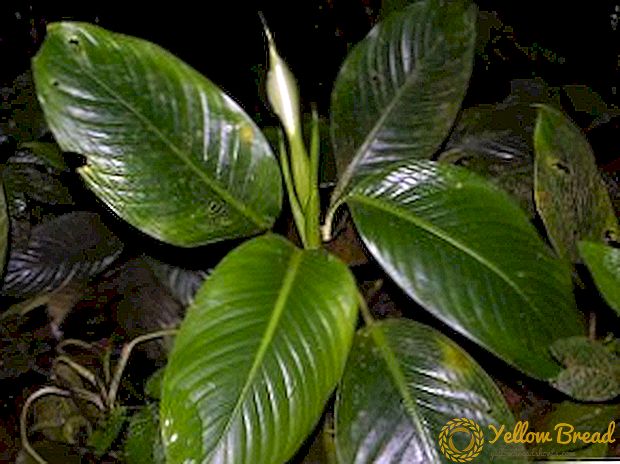 Many gardeners and gardeners know that for better yields of fruit crops, as well as to give beauty and pomp to ornamental plants, they must be fed with fertilizers. But which one is better? After all, the market offers a huge amount of similar products. The main rule: choose the one that is famous for its good reputation, and the manufacturer of which has had a high rating on the market for more than a dozen years. One of the most popular and effective fertilizers is the Master complex from the Italian company Valagro. In this article we will describe in detail the characteristics and varieties of these fertilizers, as well as how and for what plants to use them.
Many gardeners and gardeners know that for better yields of fruit crops, as well as to give beauty and pomp to ornamental plants, they must be fed with fertilizers. But which one is better? After all, the market offers a huge amount of similar products. The main rule: choose the one that is famous for its good reputation, and the manufacturer of which has had a high rating on the market for more than a dozen years. One of the most popular and effective fertilizers is the Master complex from the Italian company Valagro. In this article we will describe in detail the characteristics and varieties of these fertilizers, as well as how and for what plants to use them.
- Characteristic
- What is suitable for
- Chemical composition and packaging
- Benefits
- Instructions for use
- Master 20.20.20
- Master 18.18.18 + 3
- Master 13.40.13
- Master 10.18.32
- Master 17.6.18
- Master 15.5.30 + 2
- Master 3.11.38 + 4
- Term and storage conditions
- Manufacturer
Characteristic
This fertilizer complex consists of various microelements in its composition, and depending on the type of fertilizers and the scope of application, there are different types of dressings from Valagro.  Each of the species contains in its composition different micronutrients that are suitable for feeding one or another plant.In the composition of the drug, all trace elements are in the form of cyclic complex compounds (helat).
Each of the species contains in its composition different micronutrients that are suitable for feeding one or another plant.In the composition of the drug, all trace elements are in the form of cyclic complex compounds (helat).
Trace elements that form helates can affect vegetation of different species and varieties with higher efficiency.
The master has a good solubility in water and low electrical conductivity. All trace elements in its composition are in compensated proportions (you do not need to search the Internet for information about how much and what kind of fertilizer is needed for a particular plant).  In addition, different types of dressings Master can connect and create your own, unique and optimal for you formula. Top dressing is excellent for root and foliar fertilizers.
In addition, different types of dressings Master can connect and create your own, unique and optimal for you formula. Top dressing is excellent for root and foliar fertilizers.
Moreover, you do not contaminate the sprayer with this complex, and all the useful trace elements will remain on the leaves or in the ground for a long time.
What is suitable for
Fertilizer Master is perfect for fertilizing many garden and garden crops. It can be used for grapes, seedlings, various berry crops, indoor and annual flowers, vegetables, perennial trees, bushes, etc.
For each of these plants, there is a certain complex that has a unique formula, and will give your plants those elements that they lacked. 
Chemical composition and packaging
One of the most popular fertilizers from the company "Valagro" is Master 20.20.20. The composition of this complex includes several nitrogenous compounds, the total amount in the package of which is 20%. Also in the composition is 20% potassium oxide and 20% phosphorus oxide.
In addition to the above oxides, Master 20.20.20 contains trace elements of manganese, ferum, boron, copper and zinc in various ratios, selected according to the universal averaged characteristics of various soil types. The acidity of this complex is 5.1 Ph.
Prepack fertilizer labeled 20.20.20 in packs of 10 and 25 kg.
In the complex of fertilizers Master 18.18.18 + 3 of potassium oxide, phosphorus oxide and nitrogen compounds is contained in the same proportions as the above means, but each of the elements is 2% less in the composition.  However, in the fertilizer marked 18.18.18 + 3, magnesium oxide is also present (3%), which is indicated by the designation "+3". All other trace elements (zinc, boron, iron, manganese, etc.) are contained in the same amounts as in the above complex. Packed in packs of 500 g and 25 kg.
However, in the fertilizer marked 18.18.18 + 3, magnesium oxide is also present (3%), which is indicated by the designation "+3". All other trace elements (zinc, boron, iron, manganese, etc.) are contained in the same amounts as in the above complex. Packed in packs of 500 g and 25 kg.
The preparation with marking 13.40.13 contains 13% of nitrogen compounds and 13% of potassium oxide, however, 40% falls on phosphorus oxide, therefore some gardeners call Master 13.40.13 phosphate fertilizer.
The remaining 34% fall on other compounds, including chelate (trace elements of iron, zinc, copper, boron, etc.). Sold in packs of 25 kg.
 Packed in the same packaging capacity as in the previous case.
Packed in the same packaging capacity as in the previous case.It should be noted that all types of fertilizers from an Italian company can be found in packages of 25 kg, however smaller packages will not always be found on the market or on the Internet (many people sell this product by weight in simple weakly sealed plastic bags).
The preparation with marking 15.5.30 + 2 is rich in potassium oxide (30%), but the content of phosphorus oxide is insignificant (5%). The content of nitrogenous compounds in this type of fertilizer is 15%. The designation "+2" means that the composition of this tool additionally includes magnesium oxide in a percentage ratio of 2%.
Packed in packs of 25 kg, but like any other type of complex, sold by weight of 1 kg. Master 3.11.38 + 4 (as you probably already guessed, if you understand the logic of the numbers in the designation of the means) contains 3% nitrogenous compounds, 11% phosphorus oxide and 38% potassium oxide, and, of course, 4% oxide magnesium.  This drug is most enriched with magnesium oxide from all that are present on the market by Valagro.The product with the designation 3.11.38 + 4 is available in packs of 500 g.
This drug is most enriched with magnesium oxide from all that are present on the market by Valagro.The product with the designation 3.11.38 + 4 is available in packs of 500 g.
Benefits
Complex fertilizers from the Italian manufacturer have several advantages compared with other types of fertilizers:
- Acceleration of growth of fruit and ornamental types of plants, due to their good absorption of all oxides and trace elements.
- Due to the balanced ratio of nitrogen compounds and potassium and magnesium oxides, it is possible to obtain an early yield of high quality.
- Low salt concentration contributes to the uniform growth of all types of plants.
- Controlled forms of fruits and leaves (the leaves grow beautiful and dense, and the fruits become ideal forms).
- Vegetation does not respond to chlorosis due to the presence of trace elements of magnesium and its oxides in the composition of complex fertilizers.

Instructions for use
Before using any Master complex, you need to carefully study the instructions for use, because for each type of plant there are strictly specified dosages.
In addition, dosages vary depending on what result you want to achieve (large and tasty fruits, beautiful and lush flowering of ornamental plants, wide and one-dimensional leaves, etc.).
Master 20.20.20
It will be good if before using this drug you make an analysis of your soil on trace elements in a special laboratory. After you find out what kind of mineral substances you lack in the soil, you need to choose the optimal set of fertilizers.
If you are sure that Master 20.20.20 will be a suitable option, then carefully read the instructions for use before use.
To apply this fertilizer (as preventive measures) together with water, that is, by the method of fertigation (when irrigating from a hose or during drip irrigation), it is necessary at the rate of 5-10 kg of the mixture per 1 hectare of crops (garden plants, flower beds and decorative decorations, etc.).  By the way, with this method of fertilizers, any Master complex is used with the calculation of 5-10 kg per 1 ha.
By the way, with this method of fertilizers, any Master complex is used with the calculation of 5-10 kg per 1 ha.
- Top dressing of decorative types of flowers throughout the vegetative period. Spraying for the best growth of the sheets and giving them a beautiful shape (per 100 liters of water 0.2-0.4 kg of product). Top dressing by fertigation method (100-200 g per 100 liters of water).
- For the active growth and development of coniferous ornamental and deciduous trees, as well as bushes (fertilizing is carried out in the summer). Fertilizers are applied by the method of fertigation at the rate of 250-500 g per 100 m². You need to feed the plants regularly, once in 7-10 days.
- Strawberry fertilizers for better fruiting (fertilizing is carried out from the moment of formation of the ovaries and until the first ripe fruits appear). Fertilizers are applied by the method of fertigation with the calculation of 40-60 g per 100 m².
- Cucumbers start feeding from the moment the first 5-7 leaves appear and before the first harvest begins. Bring daily with watering at the rate of 125 g per 100 m².
- This complex will help the grapes to form a large number of bunches with the maximum number of berries on them.Brought with the beginning of the growing season, the last dressing is carried out at the moment when the unripe berries begin to acquire "ripe" shades. Feed by fertigation with the calculation of 40-60 g per day per 100 m².
- Tomatoes begin to fertilize when the first flowers bloom, and finish at the time of the first ovaries of the fruit. The scheme and dosage of fertilizing remains the same as for grapes.
- For top dressing of vegetable crops in open ground, an aqueous solution of the Master is used (1.5-2 kg of product per 1000 liters of water). Water every 2-3 days (less often, depending on the type of soil, amount of precipitation, mineral indicators of the soil, etc.). To feed vegetable crops in this way can be any of the complexes of the Master, the dosages remain the same, but one or another complex is selected depending on the mineral composition of the soil.
- Field (technical) crops are fed with drip irrigation using an aqueous solution (3-8 kg of fertilizers per 1 ha). You can use any of the complexes of the Master, depending on the mineral composition of the soil.

Master 18.18.18 + 3
The instructions for use of the fertilizer Master 18.18.18 + 3 for different plant species is almost the same as for the complex with marking 20.20.20. However, there are some differences in use, which we will tell you about.
All dosages for plants, which we have indicated by the item above, must be observed exactly the same. The difference is that this complex contains in its composition 3% magnesium oxide, which contributes to the production of chlorophyll in the leaves of plants.
Fertilizers with the designation 18.18.18 + 3 will be useful for ornamental plants, which should be different pomp and beauty of green leaves. For decorative deciduous trees, bushes and some types of flowers, the complex 18.18.18 + 3 is used throughout the growing season.
Fermented into the soil or sprayed with the help of a sprayer.  For spraying sheets of ornamental plants use an aqueous solution (200-400 g of top-dressing per 100 liters of water). Spraying should be carried out once in 9-12 days throughout the growing season.
For spraying sheets of ornamental plants use an aqueous solution (200-400 g of top-dressing per 100 liters of water). Spraying should be carried out once in 9-12 days throughout the growing season.
Master 13.40.13
This fertilizer complex is used for fertilizing at the initial stage of plant vegetation.Master 13.40.13 is rich in phosphorus oxide, therefore it is able to stimulate root growth, and is used for feeding seedlings (when transplanted into open ground, it takes root more easily). Instructions for use of this tool for different cultures:
- Fertilizing flowers, starting in early spring (the course lasts about a month). Feed by fertigation method (150-200 g of the product are used per 100 m²).
- Deciduous and coniferous ornamental plants are fed by the method of fertigation in early spring and early summer (300-500 g / 100 m²).
- Strawberries need to be fed immediately after transplanting and before the first ovaries appear. The amount of fertilizer remains the same as in the previous case.
- Cabbage, cucumbers, tomatoes, Bulgarian pepper are fed when grown by the seedling method (40-70 g / 100 m² every day using the fertigation method).
- Grapes are fed from the beginning of the growing season and until the first ovaries appear by the method of fertigation (3-5 g of the product for one plant every 3-4 days).

Master 10.18.32
This complex is used for dressing various berry and vegetable crops at the stage of active fruiting. Introduced by the method of fertigation daily. The tool is used for soils with a high level of nitrogenous substances.
Use Master 10.18.32 should be as follows:
- For the rapid ripening of the fruits of melons and watermelons (from the moment of the fruit ovary to the beginning of the harvest). To apply daily (in the early morning or late evening in a moist soil) at the rate of 20-30 g of the drug per 100 liters of water.
- For tomatoes, cucumbers and bulbous crops (accelerating the growth of fruits and increasing their size). Fertigation method every day at the rate of 45-75 g funds per 100 m².
- For the active growth of strawberry and strawberry. Fertilize once a day (50-70 g of the preparation should be applied per 100 m² of plantations).

Master 17.6.18
This complex contains few phosphorus oxides, but it is rich in nitrogen and potassium, which help plants in stressful situations (adverse weather conditions, etc.).
In addition, Master 17.6.18 provides good vegetation and a long flowering stage, helping the leaves of the plant to acquire a normal dark green color.
This complex of microelements contributes to a long period of flowering of violets, epices, begonias, etc. It also has a beneficial effect on grapes, garden crops, tomatoes, cucumbers, etc.
Some people actively use it for potted flowers, improving and accelerating their flowering.
Cucumbers are fed by Master 17.6.18, 250 g per 100 m² every day using the fertigation method. Begin feeding with the appearance of the first flowers and finish when the first fruits ripen.  Grapes are fed at the rate of 30-50 g of the funds under one bush once a day (by the method of fertigation). Tomatoes are fed in the same way as cucumbers, but during the formation of the first fruits, the dosage is doubled.
Grapes are fed at the rate of 30-50 g of the funds under one bush once a day (by the method of fertigation). Tomatoes are fed in the same way as cucumbers, but during the formation of the first fruits, the dosage is doubled.
Master 15.5.30 + 2
This type of fertilizer is used for better flowering of ornamental plants, as well as for the rapid and friendly ripening of vegetable and berry crops. Master 15.5.30 + 2 is perfect for flowers that do not tolerate a high content of phosphorus in the soil.
However, the presence of elevated potassium in this complex favorably affects the flowering of hibiscus flowers, violets, chrysanthemums, etc. 
For various ornamental and fruit crops, the drug is used differently, but the dosages remain standard (focusing on the dosages specified in the instructions for the Master 20.20.20):
- Ornamental garden and indoor flowers begin to feed from the moment of blooming flowers. Fertilize by spraying and fertilization once every 2 days. Such dressings will contribute to a long flowering period.
- Decorative conifers and deciduous plants fertilize in the fall for a better wintering. Procedures are carried out after abscission of leaves (repeat every week until the beginning of the first frost).
- Strawberries, strawberries and grapes are fertilized before the berries start ripening (procedures are carried out daily).
- Tomatoes and cucumbers are fed throughout the entire fruiting period (daily, by the method of fertigation).
Master 3.11.38 + 4
This complex contains a proportion of magnesium, which is necessary for each plant for the development of the root system. If there is not enough magnesium in the soil, then the root system develops poorly, and the plant cannot receive a sufficient number of important trace elements from the soil.  In addition, magnesium trace elements make field crops more resistant to sunburn, so Master 3.11.38 + 4 is actively used by farmers as a top dressing for plants planted in vast open spaces (wheat, soybean, corn, barley, etc.).
In addition, magnesium trace elements make field crops more resistant to sunburn, so Master 3.11.38 + 4 is actively used by farmers as a top dressing for plants planted in vast open spaces (wheat, soybean, corn, barley, etc.).
The increased potassium content and the minimum amount of nitrogenous compounds contribute to a better flowering process of ornamental trees, bushes and flowers. Moreover, this complex gives the fruit a marketable appearance (ideal sizes and shapes of any vegetable and berry fruits).

Term and storage conditions
The Master complex should be stored in a dark, closed room with low air humidity and a temperature of + 15-20 ° C.
As shown by the calculated data, partial wetting of mineral substances leads to the fact that the drug becomes 20–25% unsuitable for use, that is, its effectiveness decreases (some helate compounds are destroyed).
The storage room must not be accessible to children or animals. Mineral fertilizers are stored in places far from food.Under normal storage conditions, the Master complex remains suitable for 5 years (in a sealed package). 
Manufacturer
The manufacturer of mineral complexes for plants is the Italian company "Valagro", whose main office is located in the city of Abruzzo.
The company is constantly expanding and producing new products, creating new mineral formulas for more optimal growth and development of a wide variety of vegetable, berry and ornamental plants.
Today, the Italian company opens its branch in Brazil. Valagro is already cooperating with China, the USA and other advanced countries of the world.
It can be concluded that the products of the Italian company is the world leader in the market of mineral fertilizers. Top dressing the Master give a trade dress to any vegetable and berry cultures. The correct dosage of minerals will allow you to harvest what you have never had before.

